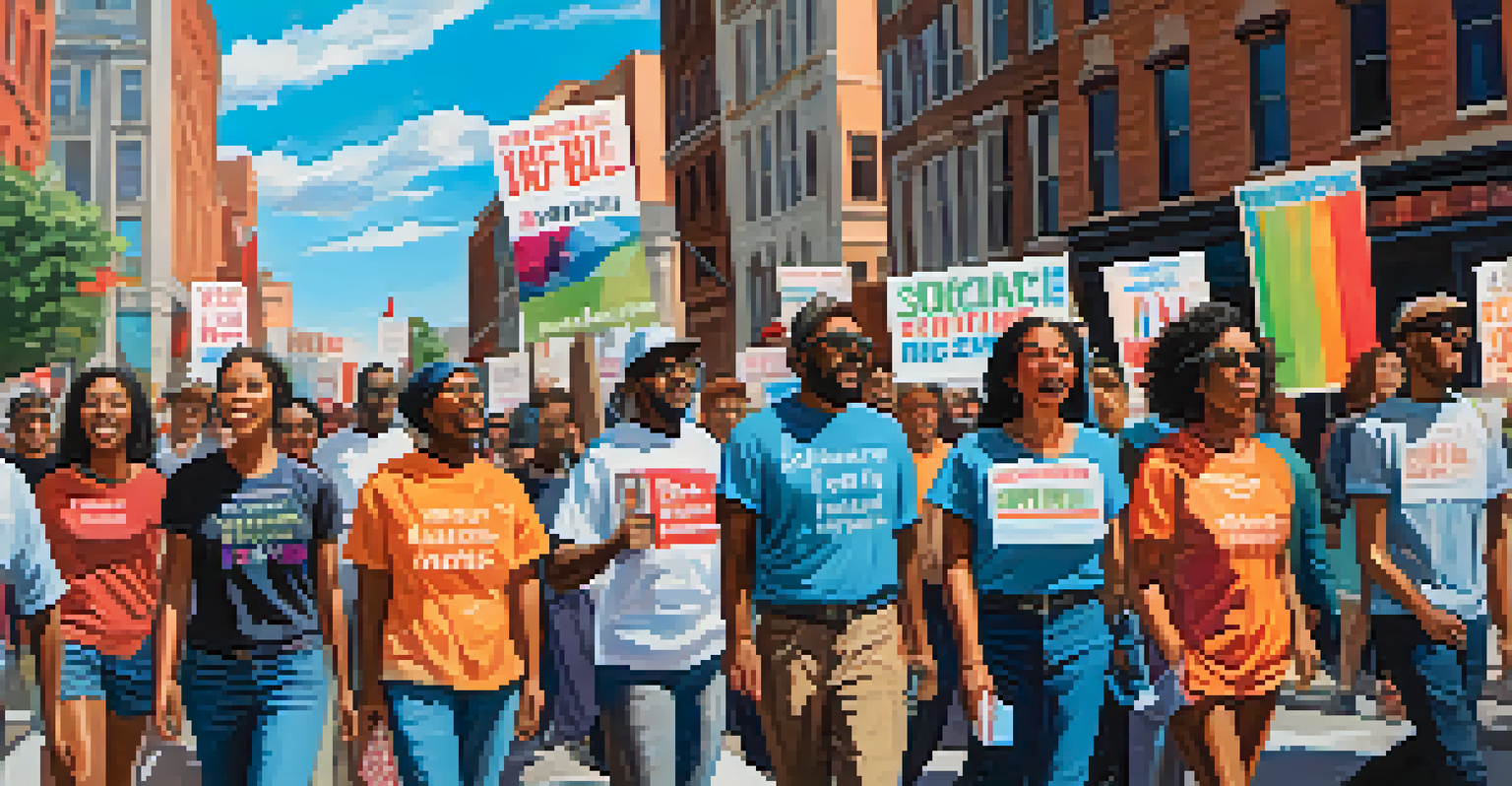The Civil Rights Trail: Following the Fight for Equality

Understanding the Civil Rights Trail: A Historical Overview
The Civil Rights Trail is an inspiring route that highlights key locations significant to the Civil Rights Movement. Stretching across several states, it encompasses landmarks where pivotal events took place, showcasing the struggle for equality in America. This trail serves not only as a historical journey but also as a reminder of the resilience and courage shown by countless individuals.
Injustice anywhere is a threat to justice everywhere.
From Montgomery, Alabama to Washington, D.C., each stop on the trail tells a unique story of struggle, triumph, and the ongoing fight for civil rights. Visitors can explore museums, churches, and other sites that played crucial roles in the movement. By walking in the footsteps of those who fought for justice, we gain a deeper understanding of the sacrifices made to secure our freedoms today.
As you traverse the Civil Rights Trail, you’ll encounter rich narratives that connect past struggles to present-day issues. This journey is not just about history; it’s about recognizing the ongoing work towards equality and justice that continues in our society.
Key Locations Along the Civil Rights Trail
The Civil Rights Trail features numerous significant locations, each with its own powerful story. For example, the Edmund Pettus Bridge in Selma, Alabama, is famously known for the Selma to Montgomery marches, where peaceful protesters were met with violence in 1965. This bridge stands today as a symbol of the struggle for voting rights and equality.

Another important site is the 16th Street Baptist Church in Birmingham, Alabama, which was the target of a tragic bombing in 1963 that killed four young girls. This tragic event galvanized public opinion and highlighted the urgent need for civil rights legislation. Visiting these sites allows individuals to reflect on the impact of such events on the course of history.
Civil Rights Trail: A Historical Journey
The Civil Rights Trail highlights key locations that played significant roles in the struggle for equality in America.
These locations serve as powerful reminders of the past and inspire visitors to engage in conversations about justice and equality today. They highlight the importance of remembering our history as we work towards a brighter future.
The Role of Activists in the Civil Rights Movement
Activists played a crucial role in the Civil Rights Movement, organizing protests, marches, and sit-ins to demand change. Figures like Martin Luther King Jr., Rosa Parks, and Malcolm X emerged as leaders, each bringing unique perspectives and strategies to the fight for equality. Their collective efforts helped challenge systemic racism and push for legislative reforms.
The time is always right to do what is right.
The bravery of everyday individuals also cannot be overlooked; thousands of unsung heroes contributed to the movement. From college students participating in sit-ins to community members standing up against injustice, their actions were instrumental in creating a ripple effect that brought about significant social change. Their stories remind us that everyone has the power to make a difference.
Today, activists continue to build on the legacy of the Civil Rights Movement, tackling issues such as police brutality, voter suppression, and systemic inequality. The spirit of activism remains alive, demonstrating that the fight for justice is ongoing.
The Impact of Legislation on Civil Rights
Legislation has been a vital tool in the fight for civil rights, with landmark laws like the Civil Rights Act of 1964 and the Voting Rights Act of 1965 paving the way for equality. These laws addressed discrimination and aimed to eliminate barriers that marginalized communities faced. Understanding this legal framework is essential to grasping the progress made and the challenges that remain.
The Civil Rights Act prohibited discrimination based on race, color, religion, sex, or national origin, marking a significant step towards equality in various sectors, including employment and education. The Voting Rights Act sought to eliminate barriers to voting for African Americans, ensuring their voices could be heard in the democratic process.
Activism: The Heart of the Movement
Activists, from famous leaders to everyday individuals, were crucial in pushing for systemic change during the Civil Rights Movement.
While these laws represented monumental victories, the ongoing struggle against systemic racism reveals that legislation alone is not enough. Continuous advocacy, education, and community engagement are necessary to uphold and expand these rights.
Educational Resources Along the Civil Rights Trail
The Civil Rights Trail is not just a travel itinerary; it also serves as an educational resource for those looking to learn more about this pivotal era in American history. Many locations along the trail offer guided tours, interactive exhibits, and educational materials that provide context and insights into the struggles faced by civil rights activists. These resources enrich the experience for visitors of all ages.
For example, the National Civil Rights Museum in Memphis, Tennessee, is located at the former Lorraine Motel, where Dr. Martin Luther King Jr. was assassinated. The museum offers a comprehensive overview of the movement, featuring artifacts, photographs, and personal stories that bring history to life. Engaging with these resources fosters a deeper understanding of the complexity of the fight for equality.
Additionally, many sites offer workshops, lectures, and community events that invite participation and discussion. These initiatives not only educate but also inspire individuals to take action in their own communities.
Planning Your Journey on the Civil Rights Trail
Planning a journey along the Civil Rights Trail can be an enriching and transformative experience. Start by researching the various locations and deciding which sites resonate most with your interests and values. Many travelers choose to focus on specific themes, such as voting rights or educational equality, to guide their journey.
Consider allocating sufficient time at each location to fully absorb the history and reflect on its significance. Some sites may offer guided tours or events that can enhance your understanding. It's also beneficial to check for any seasonal events or programs that may be taking place during your visit.
Legislation: A Tool for Change
Landmark laws like the Civil Rights Act and Voting Rights Act were essential in addressing discrimination and promoting equality.
Finally, engage with the local community as you travel. Conversations with residents and other visitors can provide invaluable perspectives and foster a deeper connection to the history of the Civil Rights Movement. This journey is not just about visiting sites; it's about honoring the legacy of those who fought for equality.
Reflecting on the Legacy of the Civil Rights Movement
As we explore the Civil Rights Trail, it's essential to reflect on the legacy of the Civil Rights Movement and its relevance today. The movement laid the groundwork for future generations, inspiring ongoing activism and advocacy for social justice. Recognizing this legacy helps us appreciate the progress made while acknowledging the work still needed.
Reflection can take many forms—whether through discussions with others, journaling, or participating in community events. Engaging with the stories of those who came before us encourages a deeper commitment to promoting equality and fighting against injustice in all its forms.

Ultimately, the Civil Rights Trail serves as a reminder that the journey toward equality is ongoing. By learning from the past and actively participating in the present, we contribute to a more just and equitable future for all.